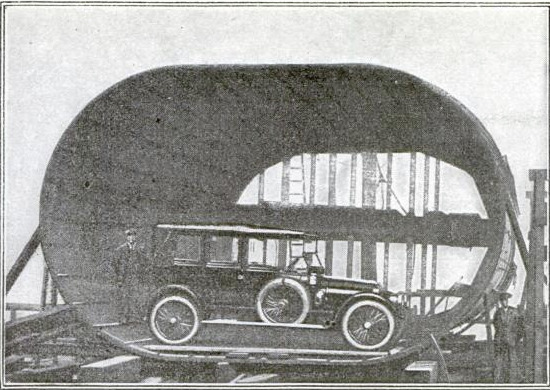A section of the funnel of a new battleship
Item
-
Title (Dublin Core)
-
A section of the funnel of a new battleship
-
Article Title and/or Image Caption (Dublin Core)
-
The Funnel's the Thing
-
extracted text (Extract Text)
-
IT looks very much as if the limousine above were going to try
to ride up the side of the tunnel-like structure in which it stands.
But that is no stunt for a new limousine to try.
The car is being used merely to bring out the size and strength
of a section of a battleship funnel. The funnel had just been com-
pleted, and was planned for use on the battleship Almirant La-
torre, built for the Chilean government.
‘What we are wondering about is how the car got in, and how it
will get out again. There seems to be little room for it to maneuver
in, and no road for it to follow when it does turn around.
Funnels on small ships are usually made of sheet-iron—often
called Russian iron. But in the case of battleships and other
large vessels the funnels are made of great, heavy
plates ribbed together and riveted. The plates
are specially made, and are carefully curved so
that they will give a smooth finish when fastened
together. In small ships the funnels are usually
cylindrical in shape. But in larger vessels they
are often oval—like the one above.
-
Language (Dublin Core)
-
eng
-
Date Issued (Dublin Core)
-
1919-10
-
pages (Bibliographic Ontology)
-
25
-
Rights (Dublin Core)
-
Public domain (Google digitized)
-
Archived by (Dublin Core)
-
Davide Donà
-
Alberto Bordignon (Supervisor)
 Popular Science Monthly, v. 95, n. 4, 1919
Popular Science Monthly, v. 95, n. 4, 1919
 Screenshot (868).png
Screenshot (868).png
